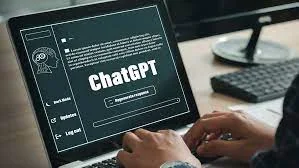Introducing ChatGPT In Changing World:
A Powerful Language Model for Natural Language Processing
Chat GPT Natural Language Processing
In the world of natural language processing, there's a new kid on the block that's been causing quite a stir. Meet ChatGPT, a large language model developed by OpenAI based on the GPT-3.5 architecture. This cutting-edge language model has quickly gained popularity for its ability to generate human-like responses to text-based prompts, making it a valuable tool for a wide range of applications.
What is ChatGPT?
ChatGPT is a machine learning-based language model that has been trained on vast amounts of text data from the internet, including books, articles, and websites. The model has been optimized to understand the nuances of natural language, allowing it to generate coherent and contextually appropriate responses to text-based prompts.
One of the unique features of ChatGPT is its ability to generate text that is indistinguishable from text written by a human. This means that it can carry out tasks such as writing product descriptions, customer service responses, and even news articles, all with a level of fluency that is impressive.
How does ChatGPT work?
ChatGPT is built on a neural network architecture that enables it to process and understand natural language. It uses a technique known as unsupervised learning to analyze large amounts of text data and identify patterns and relationships between words and phrases. Through this process, it learns to predict what words or phrases are likely to come next in a given sentence or piece of text.
When prompted with a text-based question or command, ChatGPT uses its vast database of knowledge to generate a response that is contextually appropriate and grammatically correct. It does this by leveraging its understanding of language and its ability to generate text that sounds like it was written by a human.
What are the potential applications of ChatGPT?
The potential applications of ChatGPT are vast and varied. Some of the most popular use cases include:
Customer service: ChatGPT can be used to provide instant, 24/7 customer support through chatbots or other automated systems.
Content creation: ChatGPT can generate high-quality content such as blog posts, news articles, and product descriptions.
Language translation: ChatGPT can be used to translate text from one language to another, making it a valuable tool for businesses that operate in multiple countries.
Personal assistants: ChatGPT can be used to build virtual personal assistants that can carry out tasks such as scheduling appointments, sending reminders, and making reservations.
Education: ChatGPT can be used to create interactive learning experiences such as language tutoring and quiz games.
What are the limitations of ChatGPT?
Like any machine learning model, ChatGPT has some limitations. One of the main limitations is its reliance on data. ChatGPT is only as good as the data it has been trained on, so it may not perform well on tasks that involve language that is outside of its training data.
Another limitation of ChatGPT is its lack of common sense knowledge. While it can generate text that is contextually appropriate, it may not always have a deep understanding of the real world. For example, it may not understand sarcasm or irony, or it may generate responses that are factually incorrect.
In conclusion, ChatGPT is an exciting new technology that has the potential to revolutionize the way we interact with language. Its ability to generate human-like responses to text-based prompts opens up a world of possibilities for businesses and individuals alike. While it has some limitations, it is clear that ChatGPT is a powerful tool that will continue to evolve and improve in the years to come.


